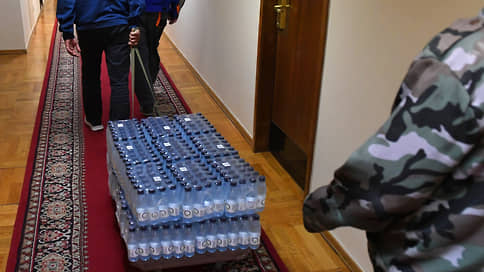Through the prism of nanoplastics – Kommersant FM
[ad_1]

Scientists have discovered a health hazard in water from plastic bottles. A 1-liter container contains an average of 240 thousand nanoplastic particles, Bloomberg writes, citing a study by chemists from Columbia University. The publication notes that due to its tiny size, nanoplastics can enter human cells and blood, including the body of newborns through the placenta.
The length of each particle is less than 1 micrometer. Previously, scientists’ work only took into account microplastics, the size of which ranges from 1 to 500 micrometers. New evidence suggests the plastic content of bottled water may be 100 times greater than previously thought. How dangerous is this?
The human body adapts to such particles, notes the acting rector of the Russian Chemical-Technical University named after D.I. Mendeleev Ilya Vorotyntsev: “In fact, microparticles of plastic accompany us from the moment of birth, because volcanic and indoor dust also consist of particles of different sizes . Here, most likely, we are talking about precursors that are added to plastic to give it elasticity.
The simplest example is a suspended ceiling. Various groups of phthalates are used there, some of them, of course, cause various diseases, including cancer, dysfunction of childbirth, etc.
This is a large class of substances, some more dangerous, others less. Naturally, organizations regulate the use of phthalates in plastics. But in any case, if they enter the body, it begins to defend itself in order to prevent harmful effects.
The World Health Organization recommends that pregnant women drink bottled water in glass containers. Accordingly, glass may be an alternative. But even in such bottles the cork has a plastic gasket. Again, you need to understand that, in addition to the health trend, there is an economic component. Therefore, these issues must be approached soberly and responsibly.”
Previous studies have provided different data on nanoplastic content in bottles. In 2018, scientists at the State University of New York found that the average 1-liter container contains about 300 particles. The analysis used a fairly wide sample – almost 250 bottles from 11 different manufacturers. Only 17 bottles contained no plastic. But in Nestle Pure Life products the concentration of particles reached 10 thousand per 1 liter. It is premature to draw clear conclusions about the dangers of this material, says independent chemistry expert Nina Adamova:
“The positive news is that the plastic that we use in everyday life (polyethylene, polypropylene, polyethylene terephthalate and many other types) is essentially inert, that is, it does not react so actively with physiological fluids and skin. When you pick up a bottle of water, it does not directly interact with your skin and does not cause any obvious harm to your health, either now or if you buy such a bottle every day.
The difficulty is that plastic as a material is quite new. Compared to wood and iron, it has only become widely used in the last 50 years. Accordingly, there was simply no time to conduct any large-scale research that would draw significant conclusions about the effect of plastic on people’s health.”
A 2022 study found that the concentration of microplastics in bottled water was higher than in tap water. Scientists note that even simply opening and closing the lid can introduce particles into the liquid. However, Columbia University researchers do not plan to dwell on these results. According to Bloomberg, they will continue to study nanoplastics, now in samples of tap water and snow collected in West Antarctica.
Everything is clear with us – Telegram channel “Kommersant FM”.
[ad_2]
Source link





